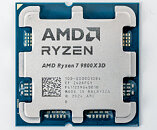
TSMC Expects to Produce 30 Percent of its Sub-2nm Chips in the US, Denies Intel Joint Venture
On the back of TSMC's first quarter report, news is coming out of Taiwan that the company is expecting to produce as much as a third of its sub 2 nm chips in its US fabs, at some point in the future. This is according to comments made by TSMC's chair and CEO C.C. Wei during its online investors conference. As we've already mentioned, TSMC is looking to expand in Arizona with a further two fabs later this year, both targeting sub 2 nm chip production, but the comments by the CEO suggests that these might be bigger fabs than initially expected, if they're going to be able to produce as much as a third of all of TSMC's sub 2 nm output by some time around the next decade.
Apparently the move to build the new fabs is due to increased demand from TSMC's US customers, which includes AMD, Apple, NVIDIA, Qualcomm and Broadcom, to mention its biggest US customers. It seems like those that are planning to produce chips at TSMC's new fabs in the US are accepting an increase in cost, although it has apparently been framed as a value proposition from TSMC's side towards its customers, which have accepted it as such. At the same time Wei once again refuted that TSMC is in any kind of talks with Intel or any other companies about joint ventures, technology licensing or technology transfer. This should put further rumours about any form of joint venture to rest for now.
Apparently the move to build the new fabs is due to increased demand from TSMC's US customers, which includes AMD, Apple, NVIDIA, Qualcomm and Broadcom, to mention its biggest US customers. It seems like those that are planning to produce chips at TSMC's new fabs in the US are accepting an increase in cost, although it has apparently been framed as a value proposition from TSMC's side towards its customers, which have accepted it as such. At the same time Wei once again refuted that TSMC is in any kind of talks with Intel or any other companies about joint ventures, technology licensing or technology transfer. This should put further rumours about any form of joint venture to rest for now.































































